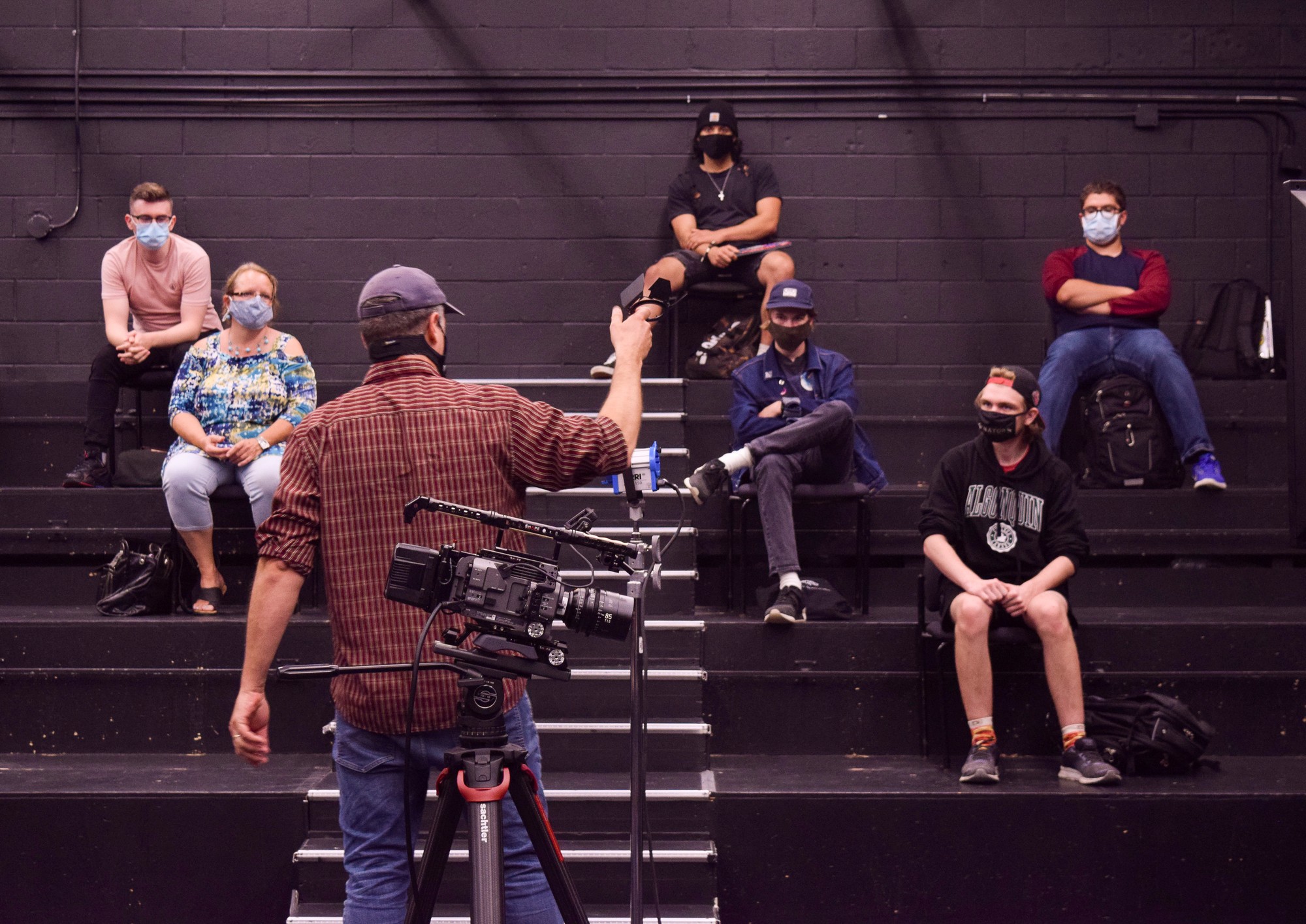Film and media production makes its debut

The switch from on-campus to remote learning at Algonquin was a sudden change for many programs last spring, but there was one program that hadn’t even begun in-person classes.
Film and media production, Algonquin’s newest program, was preparing to welcome its first-ever group of students in the fall when the pandemic made the future of the program uncertain.
“We wondered whether we could even deliver it,” said Dan Pihlainen, chair of Media Studies, when the campus was shut down.
“We had no point of reference since this is the first year of the program,” said Jeremy Atherton, the program coordinator. “Frankly, I was disappointed when our plans for the program had to change.”
After identifying the need for a program to equip students with specific skills needed for the film industry, Atherton began developing the program five years ago.
His efforts began to pay off when registration for the program opened last February. Atherton explained that registration was so competitive that coordinators “had to close the portal that same day” after spots filled up almost immediately.
Sammy Lewis, 30, was excited to join the program after looking for an opportunity to study motion graphics for film. “When the lockdown started, I thought, ‘Is this even going to happen?’” he said.
Like Lewis, Lindsey Belanger, 18, was happy to find a program that focused on preparing students for a career in the film industry. “It was a bittersweet feeling,” Belanger said of the shift to remote learning. “Everyone wants a real college experience.”

“We want to be more cautious in the first go-round,” said Pihlainen about the new program. After ruling-out going completely remote, coordinators decided that cinematography and production classes would be held on-campus, following both the college’s safety guidelines and industry protocols.
“We’re listening to comments and adjusting as we go along, but students so far seem enthusiastic,” added Pihlainen.
Now that classes have started, students say they are feeling optimistic about the program. “No one is discouraged,” said Belanger. “No one is saying, ‘COVID is ruining the program.’”
Students are also noticing the advantages of social distancing on campus. “The silver lining is that now we’re working in super small groups, so we get more attention from instructors,” said Lewis.
An unexpected benefit of the program’s new delivery method is that new opportunities have been created for students to showcase their work.
Instead of a film screening, which would have been limited to mostly friends and family, Atherton said, “Students this year will have the chance to screen a half-hour documentary on PBS.”
“The program is well-timed,” he said, adding that students will be “well-prepared for Ottawa’s growing film industry when they graduate.”
Atherton also said that since students are working around COVID safety regulations in the program, they’ll be ready for what’s ahead in their film and media careers. “In some ways, the program has exceeded my expectations. More collaboration is happening in post-production, and in a way, students will be more prepared for the industry this way.”








